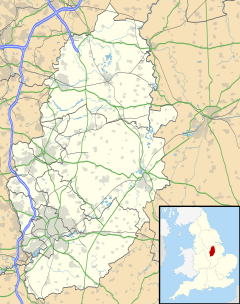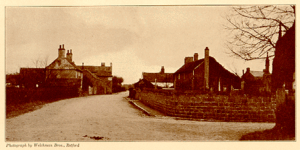Scrooby facts for kids
Quick facts for kids Scrooby |
|
|---|---|
| Village and civil parish | |
 St Wilfrid's, Scrooby |
|
Parish map |
|
| Area | 2.51 sq mi (6.5 km2) |
| Population | 307 (2021) |
| • Density | 122/sq mi (47/km2) |
| OS grid reference | SK 652908 |
| • London | 135 mi (217 km) SSE |
| District |
|
| Shire county | |
| Region | |
| Country | England |
| Sovereign state | United Kingdom |
| Post town | DONCASTER |
| Postcode district | DN10 |
| Dialling code | 01302 |
| Police | Nottinghamshire |
| Fire | Nottinghamshire |
| Ambulance | East Midlands |
| EU Parliament | East Midlands |
| UK Parliament |
|
Scrooby is a small village in northern Nottinghamshire, England. It sits by the River Ryton, close to Bawtry in South Yorkshire. In 2021, about 307 people lived there.
For many years, until 1766, Scrooby was on the Great North Road. This was a very important route, so many famous people stopped in the village. Even Queen Elizabeth I and Cardinal Wolsey visited Scrooby during their travels.
Contents
A Look Back at Scrooby's History
Scrooby has a long and interesting past. Back in 958, King Edgar gave land in this area to Oscytel, who was the Archbishop of York.
The Archbishop's Manor House
The main house in Scrooby belonged to the Archbishops of York. Because of this, it was sometimes called a palace! You can still find a nearby farmhouse called Palace Farm today.
In the late 1500s, a man named William Brewster lived in the Manor House. He worked for the Archbishop and was also the local postmaster. His son, also named William, took over the postmaster job in the 1590s.
The Pilgrim Fathers Connection
The younger William Brewster was not happy with the Anglican Church at the time. He had strong beliefs that led him to try and leave England for the Netherlands in 1607. After a first try that didn't work, he succeeded in 1608.
Later, in 1620, William Brewster made a famous journey to New England on a ship called the Mayflower. He was one of the people we now call the Pilgrim Fathers. They were looking for a place where they could worship freely.
The old Manor House was taken down in the early 1800s. But you can still see where it once stood. There are also a few parts left, like a small cottage, a large brick building for doves (a dovecote), and old fishponds. Signs in the village help visitors find these historic spots, which are now on private land.
Exploring Scrooby's Landmarks
Besides the historic Manor House site, Scrooby has other interesting places to see.
St Wilfrid's Church
The village church is called St Wilfrid's Church. It has a unique eight-sided spire that stands out.
Other Historic Spots
You can also find the old mill, the former vicarage (where the village priest lived), and many historic farmhouses. There's also a pinfold, which was a place to keep stray animals. The village's old stocks, which were used to punish people in the past, were sold to America over a hundred years ago.
Places of Worship
St Wilfrid's Church is a Church of England parish church. It is listed as a Grade II* building, meaning it is very important historically.
Images for kids




